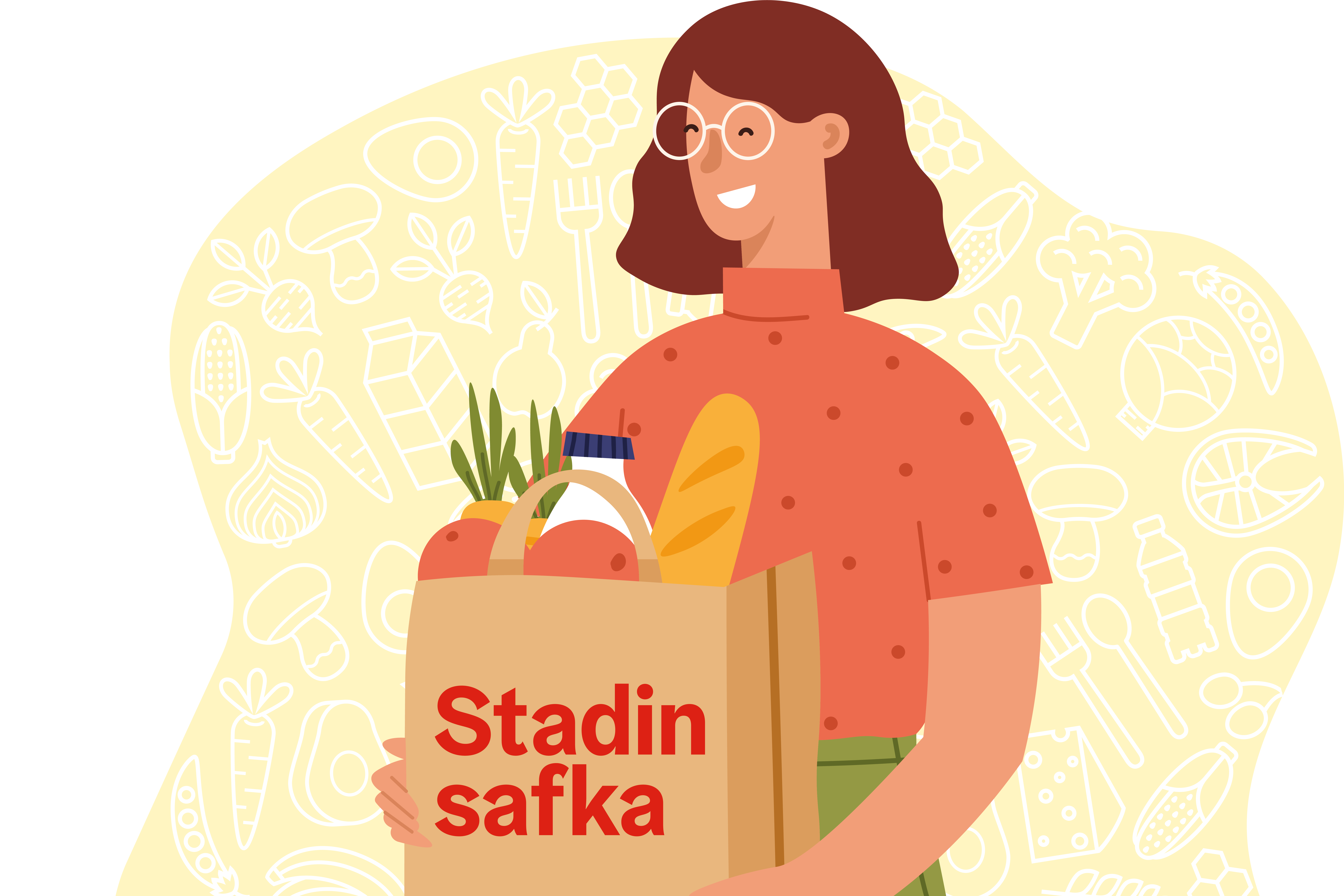


Health and welfare promotion (HYTE) involves preventive support and activities carried out jointly by all of the City’s operators, based on sustainable development, to boost the resources of different population groups. Health and welfare promotion is one of Helsinki’s key actions to promote social sustainability. The main objective is to reduce disparities in health and welfare. The work influences the comfort of life of the city’s residents, improves their perceived wellbeing, quality of life and health and ensures that their everyday environments support a good and physically active life. The systematic promotion of health and welfare creates better opportunities for agency, hope, security and a better future. Based on research and experience, the work has identified the challenges in the wellbeing of the city’s residents that require additional investment.
During the current council term, the city residents’ mental wellbeing, healthy lifestyles and everyday physical activity, as well as opportunities for meaningful recreation and leisure, will be strengthened. By investing in the regional strengthening of good community relations, the inclusion and safety of residents in their own neighbourhoods is expected to improve. Furthermore, several projects are underway to help residents enjoy their daily lives in a safe and beautiful city.
As part of the implementation of the work on health and welfare promotion, the City Council adopted the City of Helsinki Welfare Plan in November 2022, the contents of which promote the objectives of social sustainability by addressing wellbeing challenges identified on the basis of research data.
City residents face diverse wellbeing challenges
An individual’s experience of their health and wellbeing affects their resources and also reflects on e.g. quality of life, social relationships, activity in society and ability to manage in everyday life. Mental wellbeing challenges experienced by children and young people and psychological strain among the adult population are more common in Helsinki than in the country as a whole. Around one in ten people aged 75 and over feel depressed or mentally strained and 14 per cent feel lonely. The level of anxiety experienced by girls in particular has also increased in recent years, as has the loneliness experienced by young people. Regular hobbies and recreational opportunities foster wellbeing in many ways. According to a recent study, children in Helsinki with a weekly hobby experience less loneliness, school stress, sleep difficulties, mood swings and school bullying than others.
The majority of the adult population are happy and feel that their quality of life and health are good, but there are nevertheless differences in their experiences of quality of life, health and happiness depending on perceived income adequacy. These differences may, in turn, be reflected in differences between population groups in lifestyles, mental wellbeing or morbidity. There is significant variation in the prevalence of morbidity and public diseases between the districts of Helsinki. The social challenges and unhealthy lifestyles underlying morbidity are concentrated on residents who are already in a vulnerable position.
Lifestyle greatly influences health and wellbeing. In addition to physical inactivity, obesity, smoking and alcohol abuse are all linked to morbidity and reduced capacity to work. Perceived income adequacy has a connection to physical activity, i.e. young people who feel very good about their family’s economic situation and residents who find it easy or quite easy to make a living are physically more active than the other population groups.
Helsinki’s population is increasingly diverse. Alongside the increasing diversity of lifestyles, linguistic diversity is also growing, and the number of older people is increasing along with young age groups. There are differences in residents’ concerns about safety between various parts of Helsinki. In areas where experiences of insecurity are more prevalent, there are particular concerns about people’s misbehaviour, street violence, crime, drug use and dealing as well as conflicts between different language and cultural groups. On average, the participation of Helsinki residents is at a strong level, but there are also clear differences in participation between population groups and by neighbourhood. Children and young people’s experiences of inclusion have deteriorated and the gender gap in wellbeing has increased.
Safe, beautiful and functional everyday environments form the basis of the wellbeing and health of the city’s residents. As safety improves, people’s physical, mental and social health, wellbeing and quality of life are strengthened. Everyday environments refer to people’s homes, the surrounding environment and yard areas, the broader urban space and structure, and nature. This means that both the development of the broader urban structure and the promotion of safe living in the home environment are key to promoting health and welfare. Urban nature and green spaces also have a significant positive impact on health and wellbeing.
There is strong evidence of the positive effects of culture on wellbeing, health, social interaction and other resources. Participation in art activities as an experiencer or creator can prevent numerous mental and physical illnesses, as well as treat and help cope with a range of acute and chronic illnesses. Making and experiencing art strengthens the skills to navigate in a changing world: curiosity, compassion, interaction skills, the ability to see things differently and the courage to seek new directions.
Addressing wellbeing challenges through City-wide development work
The mental wellbeing of the city’s residents is strengthened by developing different forms of early support, such as better identification of mental health problems in children and young people, including through the Common Approach (CA) model, children’s emotional and interaction skills, youth work in schools, communality and peer support.
The recreational activities of children and young people in particular are being strengthened. The Finnish model for leisure activities in Helsinki offers free hobbies in all comprehensive schools in Helsinki. The activities have been made permanent and included in the Youth Act. The model aims to reach especially those children and young people who do not have hobbies. The Culture Kids activities are continued by including a new age group every year. For older people, cultural instructor activities and companion activities are developed. Volunteering and peer activities and cooperation with organisations is developed extensively.
Physical activity is promoted through cooperation between divisions, targeting the least active population groups and raising awareness of opportunities for physical activity and exercise for all residents. Physical activity is promoted in every early childhood education unit, comprehensive school and upper secondary school. Methods and tools for bringing up physical activity are developed extensively in health and social services. The workplace and mental wellbeing of City employees is strengthened by increasing opportunities for physical activity. The status of physical activity is strengthened in the care culture of hospital, rehabilitation and nursing services by means of a mobility agreement. The exercise and physical activity of older people is promoted in cooperation between the City’s operators, organisations and companies.
The implementation of healthy lifestyles is promoted through means such as nutrition training for professionals and the use of digital tools. Wellbeing cafés are organised for children and young people, and the use of the Finger operating model for older people is strengthened. Development related to memory-friendliness is also being strengthened during the council term. Substance abuse prevention methods are strengthened through measures targeted at different population groups, and the service chain for substance abuse and addiction in families with children is developed.
Good community relations are promoted by increasing interaction between individuals and influencing people’s sense of security and attitudes. The pluralism of residents and their equal opportunities for participation and influence have been strengthened, anti-polarising approaches have been introduced in youth work, and City employees have been trained in the use of dialogical, constructive discussion methods, which have been used in the discussion of controversial issues or those that are of concern to a wide audience, such as changes in services. In Helsinki’s participatory budgeting OmaStadi, the participation of population groups identified as underrepresented in previous rounds is promoted at all stages of the process, equality is supported and multi-channel communication is strengthened, taking into account different population groups and city districts. The children’s rights perspective is addressed through UNICEF’s Child Friendly Cities work.
Residents’ daily environments are influenced by identifying and addressing safety challenges in different neighbourhoods. Planning guidelines for the walking environment and the improvement of the safety of pedestrian crossings promote safe mobility in urban areas. The Percentage for Art principle gives city residents the opportunity to experience and encounter art in their neighbourhoods. Furthermore, the City addresses the increasing violence in close relationships and local factors that undermine safety, and raises awareness among residents about the safety of their homes and neighbourhoods.
Successes:
- The majority of Helsinki residents feel that their quality of life and health is good and are happy.
- Service chain work has been launched in mental health services for children and young people, in substance abuse and mental health work for older people, and with families experiencing violence in close relationships.
- Common Approach training for mental wellbeing has been launched in the divisions. In addition to this, several other training programmes for mental wellbeing skills are underway.
- The Finnish model for leisure activities has been established and offers free hobbies in all comprehensive schools in Helsinki. Hobby groups currently reach around 30% of the target group.
- More than 7,000 upper secondary level students have been reached through the Liikuntacoach activities.
- There is a growing understanding of the importance of daily physical activity. Hundreds of thousands of Helsinki residents have been reached through campaigns, events, websites and materials.
Areas for development:
- With the exception of young children, the average Helsinki resident engages in too little physical activity and is too sedentary for their health, compared to national recommendations for physical activity.
- There are differences in quality of life, health and happiness depending on perceived income adequacy.
- Mental wellbeing challenges and increased loneliness experienced by children and young people, as well as psychological strain among the adult population, are more common in Helsinki than in the country as a whole, and there are still challenges in the development of early support.
- There is significant variation in the prevalence of morbidity and public diseases between the districts of Helsinki. Digital self-care services for the city’s residents need to be improved to better reach the residents.
- Children and young people’s experiences of inclusion have deteriorated and the gender gap in wellbeing has increased.
- Despite the numerous measures taken, excess weight and obesity have not decreased in Helsinki. Excess weight is a significant challenge in terms of public health.
- There are projects, experiments and good practices, but there are challenges in getting them established.
Programmes, studies and websites:
Health and welfare promotion website
Well-being, Health and Safety for Everyone – The City of Helsinki Welfare Plan 2022–2025 PDF
Annual monitoring reports of the City of Helsinki Welfare Plan


